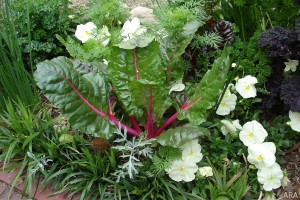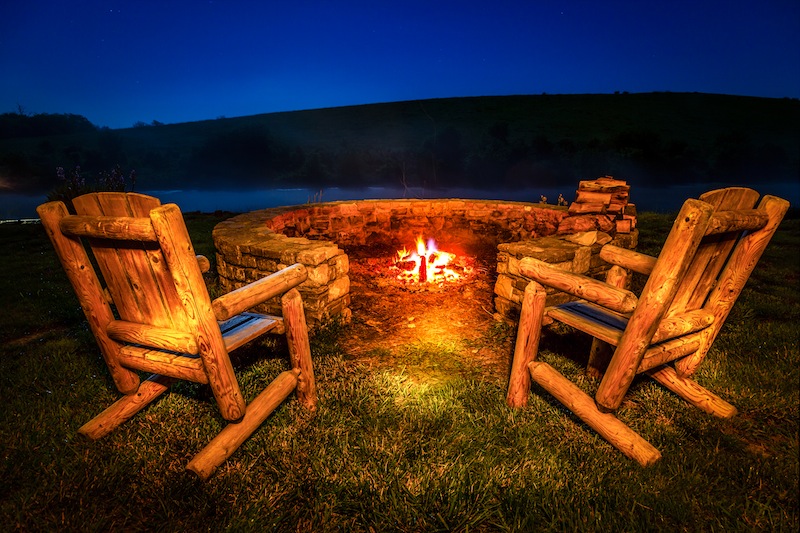Some like it cold: It’s not too late to get your fall veggie garden growing
 If you haven’t yet joined the “grow your own vegetables” craze, it’s not too late to join in. You can produce a bounty of vitamin-rich veggies from plot (or pot) to plate this fall, plus you’ll save a bundle by growing them yourself.
If you haven’t yet joined the “grow your own vegetables” craze, it’s not too late to join in. You can produce a bounty of vitamin-rich veggies from plot (or pot) to plate this fall, plus you’ll save a bundle by growing them yourself.
You may be surprised to find that with just a little attention and effort, growing fall vegetables in the backyard garden and in planters is even more enjoyable than planting a vegetable garden during the spring and summer seasons. Why? Cooler autumn temperatures make it a delight to spend time outside in the garden and also provide an advantage when it’s time to harvest your crops.
You’ll spend less time caring for your fall crops because of the favorable cool weather growing conditions. Plants will grow rapidly at first and gradually slow as the days become shorter and colder. Destructive insects won’t be as numerous in autumn as they are in summer months. Weeds germinate less frequently and grow slower than they do during the warmer seasons. Compared to hot and dry summers, fall usually brings an increase in the amount of precipitation, eliminating another time-consuming chore – watering.
What you need to know:
1. Let the sunshine in. Most vegetables need full sun – at least six hours of direct sunlight per day. They also require a steady supply of moisture and nutrients from the soil. You can help ensure your plants get both by mixing a 2-inch layer of compost into the soil (bagged compost is available at garden centers). Or spread a balanced fertilizer, such as 10-10-10, according to labeled instructions. Plants will need an inch of moisture per week, either through rain or supplemental watering.
2. Start with transplants. Transplants buy you lots of time. Plants are six weeks or older when you put them into the ground, so you will begin harvesting much sooner than if you start from seed.
3. Don’t fear frost. When frost threatens, cover plants with a floating row cover, cold frame or a cloche. Or, you can grow fall veggies in a container and move the pot to a protected location on frosty nights.
Essential, preliminary planning tips for fall vegetable gardens include:
* Before planting any new plant make sure that you clear the area of summer and spring crops planted previously, as they may decay and encourage bacterial infection.
* Spread a few inches of mulch or compost over the area. Make sure that you turn up the soil’s top layer and water well. Allow the soil to rest for a day before planting new fall plants.
* During the fall season most areas experience rain and even frost, so make sure that your soil is well drained and doesn’t get soggy.
Vegetables best suited for fall gardens:
After following the essential preliminary steps for fall vegetable gardening, it’s time to select vegetables for planting. Here’s a list of fast-growing, cold-hardy crops that are ideal for fall vegetable gardening:
Winterbor Kale – This nutritious leafy green is a vigorous producer that endures winter easily, even in very cold climates. Cut the outer leaves so that the center can continue growing. Space transplants about 12 inches apart
Georgia Collards – Another leafy green similar to kale, collards offer a larger, stronger, sweet cabbage-like flavor. Leaves taste best when young. Space transplants 36 inches apart.
Romaine Lettuce – Romaine packs more vitamins, minerals, fiber, and phytonutrients than other popular types of lettuce. Rich in fiber, vitamin C, and beta-carotene, romaine is an especially good vegetable for heart health. Space transplants 18 inches apart.
Early Dividend Broccoli – Popular, productive and easy to grow, this broccoli is high in fiber and calcium. Set transplants 18 inches apart
Mustard Greens – Offering spicy hot leaves, this is a very fast-growing, nutritious vegetable. Mustard greens always taste sweeter when nipped by frost. Space plants 12 inches apart
Bonnie Hybrid Cabbage – Bonnie’s best cabbage. Grows large, round, blue-green heads. Cabbage is especially high in beta-carotene, vitamin C, K and fiber.
Arugula – These fast-growing leafy greens are great for salads or gourmet recipes. This peppery-tasting green is a super food for your bones. The leaves are “nutrient dense” and low in calories. They are especially high in vitamins A, C, and K.
If you put these practices into place this fall, you’ll get your garden off to the right start and set it up for a fruitful season. Preparation is key, but the reward is a healthier, more productive garden – and fresh food that tastes better than anything you can buy at the store.
Courtesy of ARA
IMAGE CAPTIONS:
——————————————-
Caption 1: Beauty and nutrition combine in a fall garden that features super green Swiss Chard and cheerful white pansies. Bonnie Plant transplants make it easy to get your fall vegetable garden started.
Caption 2: Lettuce and herbs make a lush harvest when potted for fall. Bonnie Plant biodegradable Pots make it easy to get your fall vegetable garden started.








